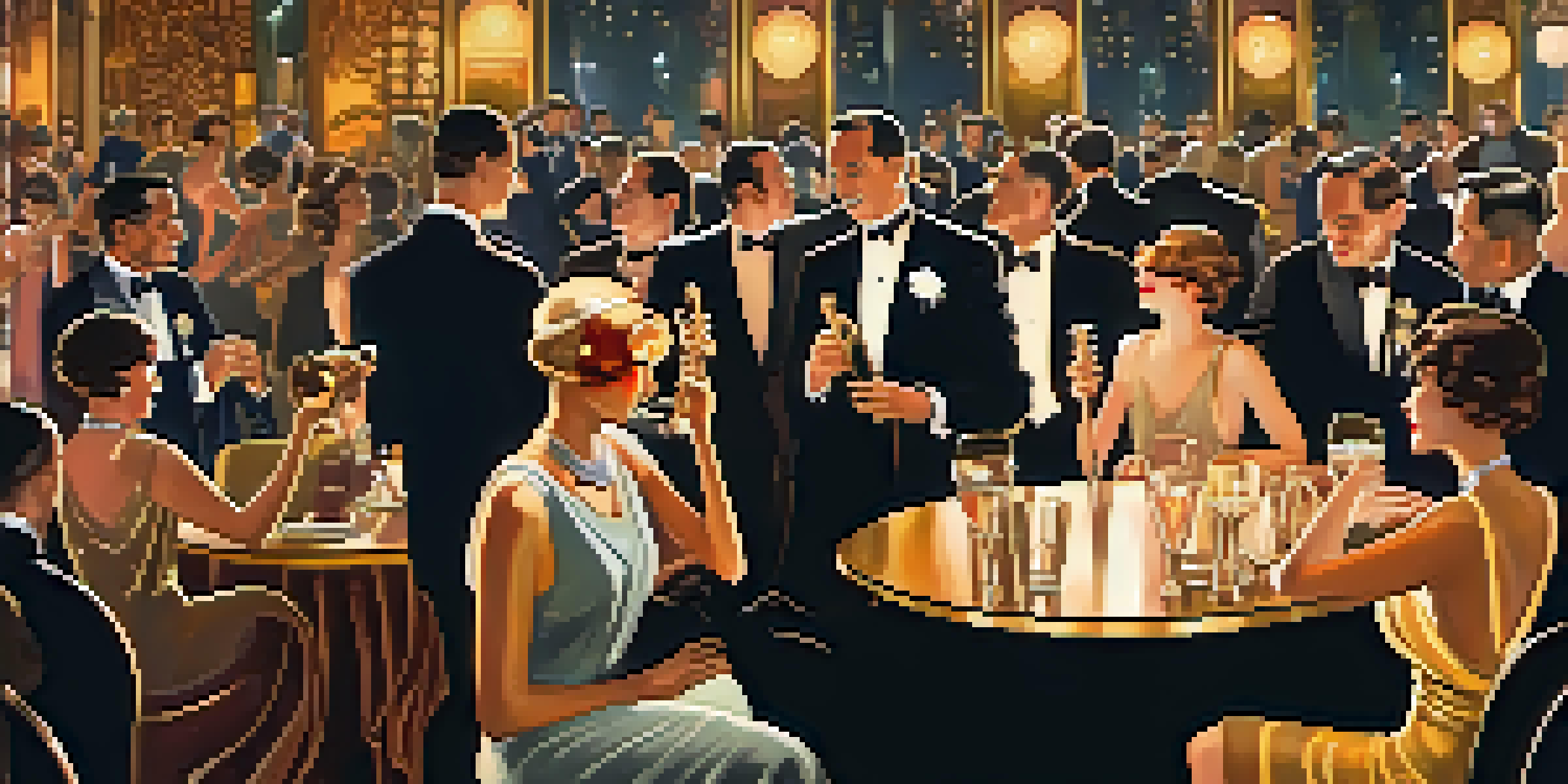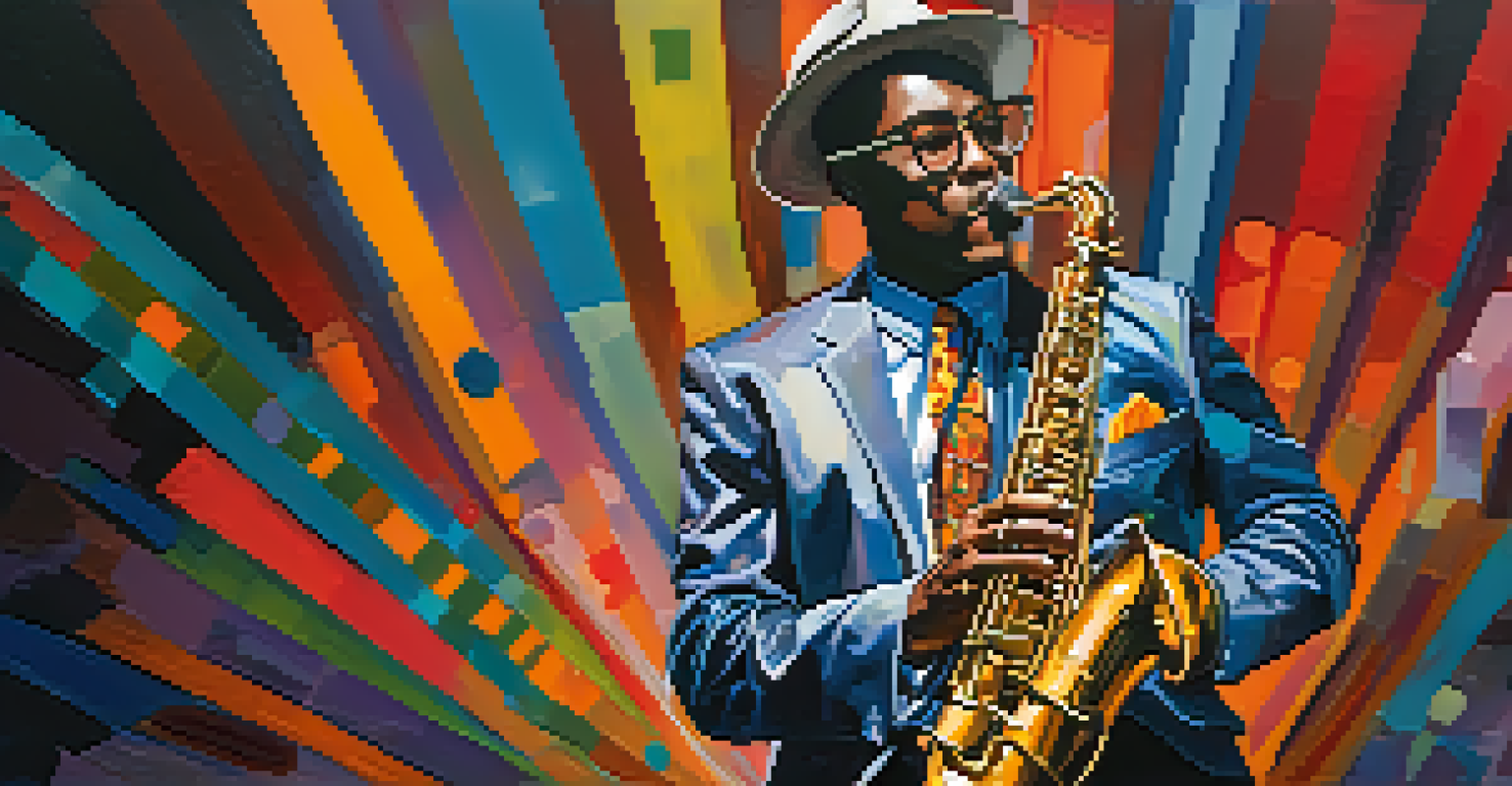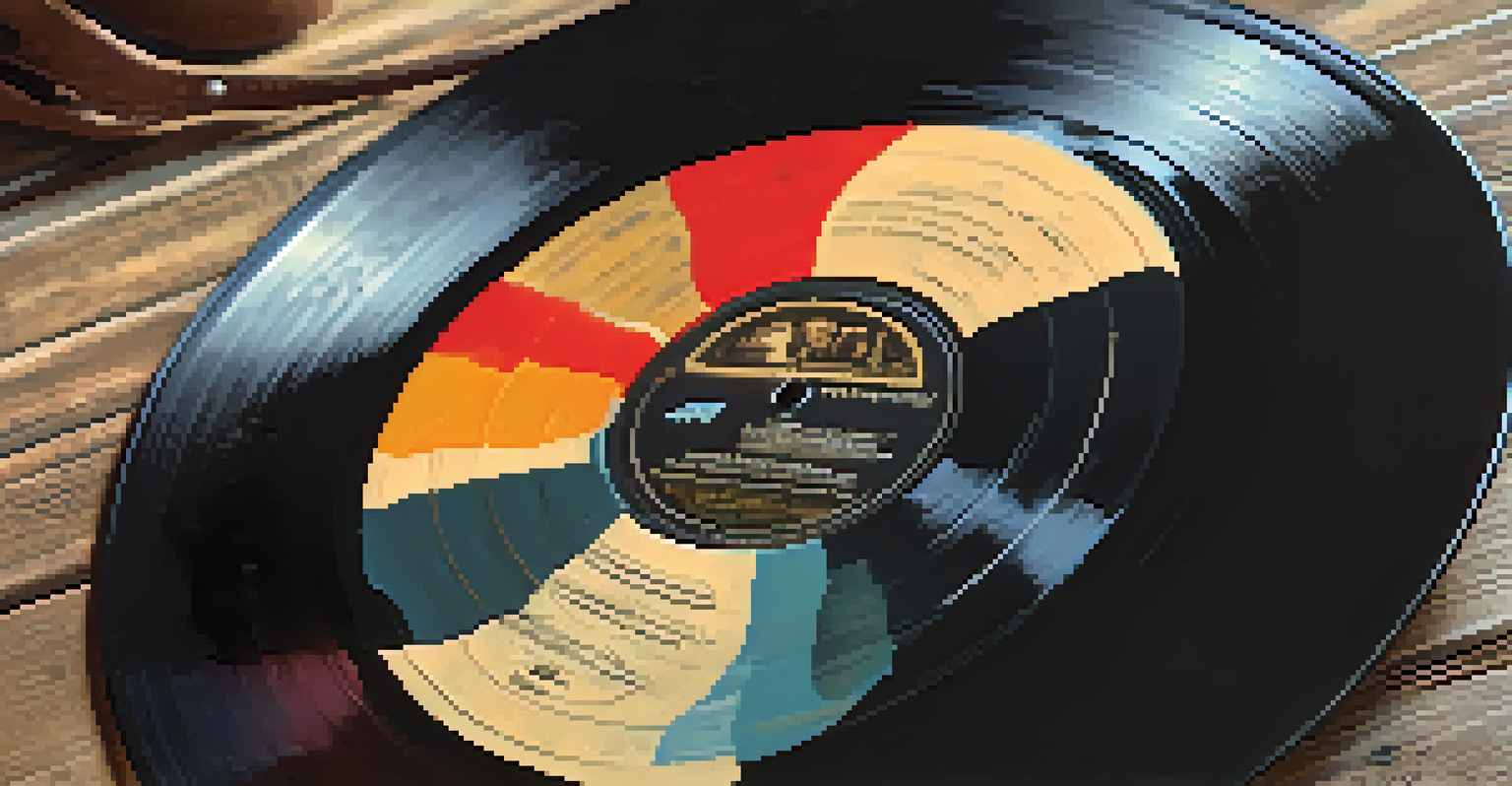Exploring the Connection Between Jazz and Vintage Fashion Trends

The Birth of Jazz and Its Cultural Impact
Jazz emerged in the early 20th century, deeply rooted in African American culture. It was a revolutionary genre that broke musical boundaries and gave voice to the struggles and aspirations of a generation. The vibrant rhythms and improvisational style of jazz resonated with the spirit of change, influencing not just music but also fashion and lifestyle.
Jazz is the only music in which the same note can be played night after night but differently each time.
As jazz gained popularity, it attracted diverse audiences, creating a cultural melting pot. This new cultural landscape fostered creativity and expression, which found its way into the clothing styles of the time. The connection between jazz music and fashion became evident as musicians and fans alike embraced bold styles that reflected their individuality.
This era laid the groundwork for a unique synergy between jazz and vintage fashion, which would evolve over the decades. The creative energy of jazz musicians inspired designers, leading to a distinctive look that was both stylish and expressive. Understanding this connection helps us appreciate how deeply intertwined music and fashion can be.
The Roaring Twenties: Jazz Age Fashion
The 1920s, often referred to as the Jazz Age, marked a significant shift in fashion, characterized by flapper dresses, cloche hats, and tailored suits. Women began to break free from traditional norms, opting for more relaxed silhouettes that allowed them to dance the night away at jazz clubs. This newfound freedom mirrored the improvisational style of jazz music, creating an exciting cultural dynamic.

Jazz musicians like Duke Ellington and Louis Armstrong became style icons, influencing trends with their sharp suits and charismatic presence. Their outfits often featured bold patterns and vibrant colors, setting a precedent for men’s fashion that embraced flair and individuality. The music scene and fashion world thrived together, each amplifying the other’s impact.
Jazz Shapes Fashion Trends
Throughout history, jazz has profoundly influenced fashion, reflecting cultural shifts and individual expression.
This vibrant period showcased how jazz and fashion could express rebellion and a desire for change. The Jazz Age not only transformed musical tastes but also redefined societal norms around beauty and self-expression. The legacy of this era continues to inspire modern fashion trends, proving that the connection between jazz and style is timeless.
The Influence of Cool Jazz in the 1950s
The 1950s saw the emergence of cool jazz, a subgenre known for its relaxed tempos and sophisticated melodies. As artists like Miles Davis and Chet Baker popularized this style, fashion also underwent a transformation. The sleek, minimalist aesthetic of cool jazz mirrored the clean lines and tailored looks that dominated the fashion scene during this decade.
Fashion is the armor to survive the reality of everyday life.
The influence of cool jazz is evident in the popularity of casual yet chic clothing, such as slim-fit trousers and fitted blazers. Musicians often sported sunglasses and berets, creating a look that became synonymous with the jazz lifestyle. This cultivated an image of sophistication and effortless style, which resonated with audiences beyond the music venues.
As jazz continued to evolve, its impact on fashion remained strong. The 1950s represented a pivotal moment where music and style were no longer just separate entities; they became intertwined aspects of cultural identity. The connection between cool jazz and vintage fashion during this time is a testament to the power of artistic expression in shaping broader trends.
The Vibrant Colors of the 1960s Jazz Scene
The 1960s jazz scene brought about a colorful explosion in both music and fashion. With the rise of artists like John Coltrane and Nina Simone, jazz began to reflect the social and political changes of the era. This vibrant energy inspired a fashion movement that embraced bold prints, bright colors, and eclectic styles.
Musicians started to experiment with their looks, often incorporating elements from various cultures and art movements. This fusion resulted in a more expressive and diverse fashion landscape, where individuality was celebrated. The psychedelic patterns and vibrant colors found in the clothing of the time mirrored the experimental nature of jazz music.
The Cyclical Nature of Style
The interplay between jazz and fashion highlights how past styles can inspire modern trends, creating a dynamic relationship.
The 1960s were not just about sound; they were about creating a visual identity that resonated with the youth. This artistic synergy between jazz and fashion helped to define a generation, leaving a lasting impact on both realms. The connection between the two continues to inspire designers and musicians today, illustrating the enduring power of creativity.
The Retro Revival of the 1970s and 80s
As we moved into the 1970s and 80s, jazz experienced a resurgence, leading to a retro revival in fashion. Artists like Herbie Hancock and Weather Report brought new life to the genre, while the fashion world embraced vintage styles from previous decades. This period saw a blend of classic jazz aesthetics with contemporary trends, creating a unique fusion.
The bohemian styles of the 70s, complete with bell-bottoms and oversized sunglasses, were often associated with jazz culture. Musicians and fans alike adopted these looks, making them synonymous with the jazz scene. The influence of this retro revival brought together old and new, celebrating the history of jazz while pushing the fashion envelope.
This era highlighted the cyclical nature of trends, where vintage styles became relevant again. The connection between jazz and fashion during this time demonstrated how past influences could inform modern sensibilities. It’s a reminder that style is not just about the new; it’s also about honoring the history that shapes our present.
Modern Jazz: A New Wave of Fashion Influence
Today, modern jazz continues to thrive, with artists like Kamasi Washington and Esperanza Spalding pushing the boundaries of the genre. This contemporary movement has sparked a renewed interest in vintage fashion, as new generations seek inspiration from the styles of the past. The visual aesthetic of modern jazz often incorporates elements reminiscent of earlier eras, creating a bridge between history and modernity.
Fashion designers are increasingly looking to jazz for inspiration, incorporating bold prints and unique silhouettes into their collections. This revival reflects a desire for authenticity and self-expression, which are key values in both jazz music and fashion. The influence of jazz on current fashion trends showcases the genre's enduring legacy.
Future of Jazz and Fashion
As jazz continues to evolve, its impact on vintage fashion remains strong, promising innovative designs that celebrate both heritage and modernity.
As we explore the connection between jazz and vintage fashion, it's clear that this relationship is ever-evolving. The modern jazz scene acts as a canvas for creative expression, blending the old with the new. This ongoing dialogue between music and fashion will continue to inspire future generations, proving that the rhythm of jazz is a timeless source of style.
The Cultural Significance of Jazz-Inspired Fashion
The connection between jazz and fashion goes beyond mere aesthetics; it speaks to cultural significance and identity. Each era of jazz has influenced fashion trends that reflect the social attitudes and movements of the time. The styles associated with jazz are often a celebration of individuality, creativity, and the pursuit of freedom.
Fashion choices within the jazz community have often served as statements of resistance and empowerment. For instance, the bold fashion of the Harlem Renaissance was not just about style; it was a declaration of pride in African American culture. Similarly, modern jazz artists continue to use their fashion as a means of expression and storytelling.

This ongoing relationship between jazz and fashion underscores the idea that art, in all its forms, is a powerful vehicle for change. By embracing the styles inspired by jazz, individuals can connect with a rich cultural heritage and celebrate the diversity that music brings. The significance of this connection is a reminder that fashion, like jazz, can be a form of expression that transcends time and boundaries.
The Future of Jazz and Vintage Fashion Trends
Looking ahead, the relationship between jazz and vintage fashion shows no signs of fading. As new artists emerge and the genre continues to evolve, we can expect to see fresh interpretations of classic styles. The interplay between music and fashion will likely remain a dynamic force, inspiring innovative trends that honor the past while embracing the future.
With the rise of sustainable fashion and a focus on vintage pieces, there’s a growing appreciation for the styles that have been influenced by jazz. This resurgence of interest presents an opportunity for designers to explore the rich tapestry of jazz-inspired fashion, creating collections that resonate with both historical significance and contemporary relevance.
Ultimately, the future of jazz and vintage fashion is a canvas waiting to be painted. As artists and designers collaborate, we can anticipate a vibrant fusion of creativity that pays homage to the timeless connection between music and style. This journey reminds us that the rhythm of jazz will always have a place in the world of fashion.